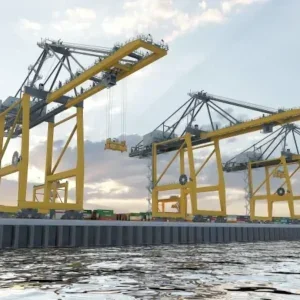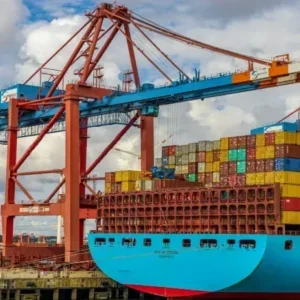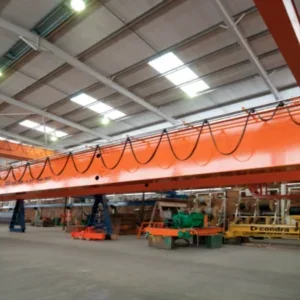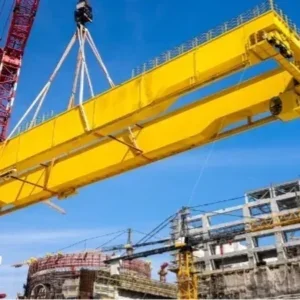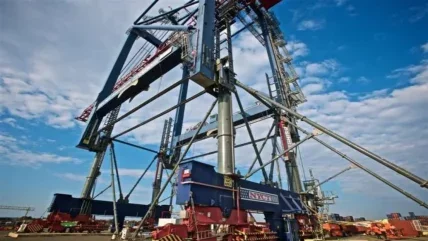
Economic downturns are inevitable cycles that pose significant challenges across various sectors, including the overhead lifting equipment and material handling industry. These downturns can lead to reduced demand, constrained budgets, and increased competition. This article delves into the impacts of economic downturns on the industry, explores strategies to mitigate these effects, and provides insights into how companies can emerge stronger.
Understanding economic downturns
Defining economic downturns
Economic downturns, often characterised by a decline in GDP, reduced consumer spending, and rising unemployment, impact business activities and financial stability. Recessions and depressions are severe forms of economic downturns that can last for extended periods, exacerbating financial strain on industries.
Causes of economic downturns
Several factors can trigger economic downturns, including:
- Financial Crises: Banking collapses and financial market volatility can lead to widespread economic slowdowns.
- Global Events: Pandemics, geopolitical tensions, and natural disasters can disrupt global trade and economic stability.
- Policy Changes: Sudden changes in government policies, such as tax hikes or spending cuts, can reduce economic activity.
- Market Saturation: Overproduction and market saturation in key industries can lead to reduced profitability and economic contraction.
Impact on the overhead lifting equipment and material handling industry
Reduced demand for equipment
During economic downturns, companies often delay or cancel capital investments, leading to reduced demand for overhead lifting equipment and material handling solutions. This can result in:
- Lower Sales Volumes: Manufacturers and distributors may experience a significant drop in sales, impacting revenue.
- Increased Competition: With fewer projects, competition for available contracts intensifies, driving down prices and profit margins.
Budget constraints
Economic downturns typically lead to tighter budgets for companies, affecting their purchasing decisions:
- Deferred Maintenance: Companies may postpone maintenance and upgrades of existing equipment, leading to potential operational inefficiencies and safety risks.
- Cost-cutting Measures: Firms may implement cost-cutting measures, including workforce reductions and streamlined operations, to conserve cash.
Supply chain disruptions
The global nature of the overhead lifting and material handling industry means that supply chain disruptions during economic downturns can have widespread effects:
- Supplier Reliability: Economic strain can affect the reliability and stability of suppliers, leading to delays and increased costs.
- Inventory Management: Managing inventory becomes challenging as fluctuating demand makes it difficult to predict future needs accurately.
Financial pressures
Economic downturns place significant financial pressures on businesses:
- Cash Flow Issues: Reduced sales and delayed payments can strain cash flow, making it challenging to meet operational expenses and financial obligations.
- Access to Capital: Credit conditions often tighten during downturns, making it harder for companies to secure financing for operations and growth.
Strategies for mitigating the impact of economic downturns
Diversifying revenue streams
Diversification can help companies mitigate the impact of reduced demand in their primary markets:
- Product Expansion: Develop new products or services that cater to different market segments or industries.
- Geographic Diversification: Expand into new geographic markets to reduce reliance on any single region affected by economic downturns.
Strengthening customer relationships
Maintaining strong customer relationships is crucial during economic downturns:
- Customer Loyalty Programs: Implement loyalty programs to retain existing customers and encourage repeat business.
- Flexible Financing Options: Offer flexible financing and payment options to help customers manage their budgets and continue purchasing equipment.
Optimising operations
Operational efficiency becomes critical during economic downturns:
- Cost Management: Implement cost management strategies to reduce overhead without compromising quality or safety.
- Lean Manufacturing: Adopt lean manufacturing principles to streamline production processes and reduce waste.
Enhancing supply chain resilience
Building a resilient supply chain can help companies navigate disruptions:
- Supplier Diversification: Diversify the supplier base to reduce dependency on any single source and enhance supply chain stability.
- Inventory Optimisation: Use data analytics to optimise inventory levels, ensuring sufficient stock to meet demand without overstocking.
Financial management
Effective financial management is essential to weather economic downturns:
- Cash Flow Management: Monitor cash flow closely and implement measures to improve liquidity, such as renegotiating payment terms with suppliers and customers.
- Access to Credit: Maintain good relationships with financial institutions to ensure access to credit when needed.
Case studies: industry responses to economic downturns
Case study 1: diversifying revenue streams
A leading crane manufacturer faced declining sales during a recent economic downturn. In response, the company expanded its product line to include smaller, more affordable lifting solutions targeted at small and medium-sized enterprises (SMEs). This diversification strategy helped the company tap into a new customer base and stabilise revenue.
Case study 2: strengthening customer relationships
A material handling firm implemented a customer loyalty programme offering discounts and extended warranties to long-term clients. This initiative not only improved customer retention but also led to increased referrals, mitigating the impact of reduced demand from new customers.
Case study 3: optimising operations
A logistics provider adopted lean manufacturing principles to streamline its operations and reduce costs. By eliminating waste and improving efficiency, the company maintained profitability despite a decline in overall market demand.
The future of the industry in a volatile economic landscape
Embracing digital transformation
Digital transformation can enhance efficiency and resilience in the face of economic downturns:
- Automation and Robotics: Invest in automation and robotics to reduce labour costs and improve operational efficiency.
- Data Analytics: Utilise data analytics to gain insights into market trends, customer behaviour, and operational performance.
Sustainable practices
Sustainability is increasingly important for long-term resilience:
- Energy Efficiency: Implement energy-efficient practices to reduce operational costs and environmental impact.
- Circular Economy: Explore circular economy principles, such as recycling and remanufacturing, to reduce waste and create new revenue streams.
Policy and regulation adaptation
Adapting to evolving policies and regulations is crucial for long-term success:
- Regulatory Compliance: Ensure compliance with local and international regulations, particularly those related to sustainability and safety.
- Advocacy: Engage in advocacy efforts to influence policy developments that support industry resilience and growth.
Conclusion
Economic downturns present significant challenges to the overhead lifting equipment and material handling industry. However, by diversifying revenue streams, strengthening customer relationships, optimising operations, enhancing supply chain resilience, and practising effective financial management, companies can mitigate these impacts and emerge stronger. Embracing digital transformation, sustainable practices, and adapting to policy changes will further ensure the industry’s resilience in a volatile economic landscape. Proactive strategies and adaptive measures are essential for sustaining growth and maintaining operational integrity during economic downturns. As the global economy continues to evolve, industry players must remain agile and forward-thinking to navigate the challenges and seize opportunities that arise.


